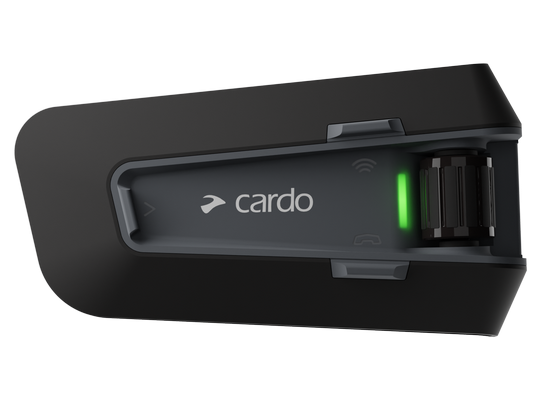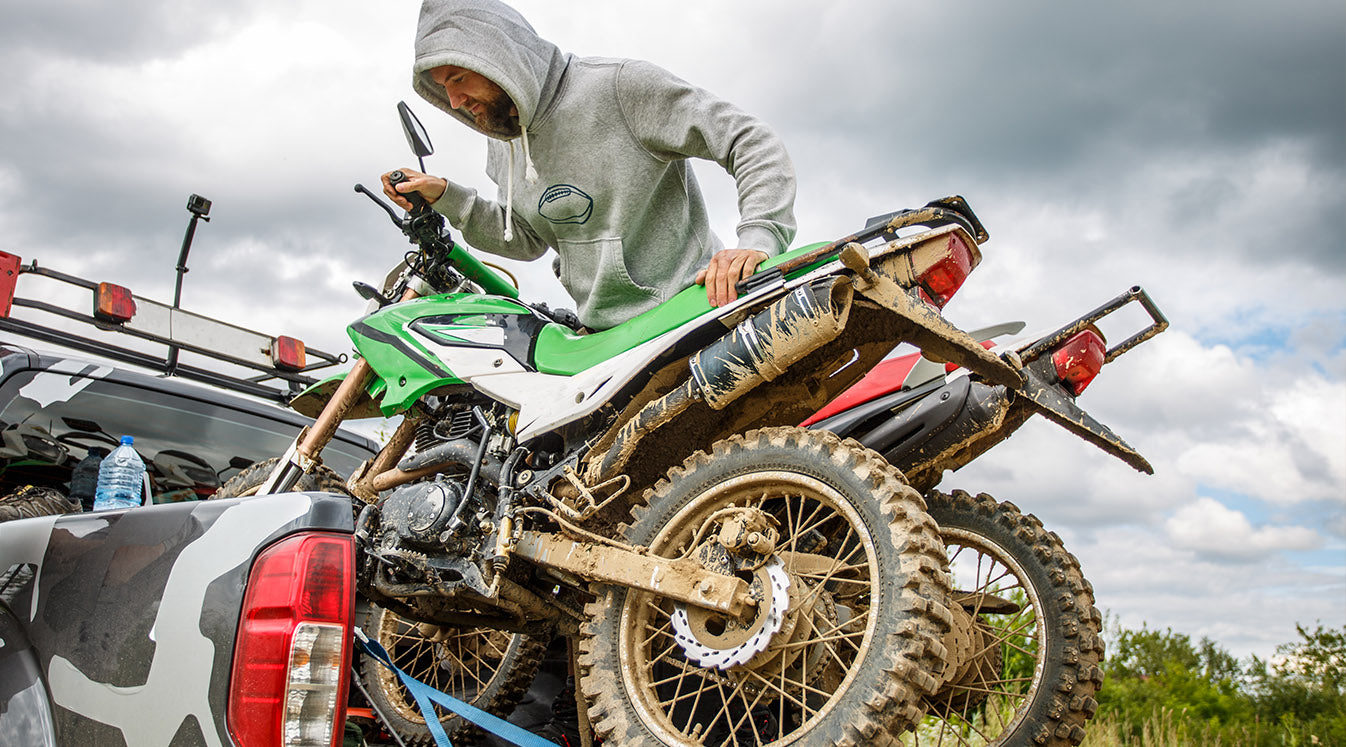This guide will give you a brief overview of how to transport a motorcycle, including common options and how to tie your motorcycle down securely. First, we’ll examine why you might need to transport a motorcycle and how it’s usually done.
When and How to Transport a Motorcycle
There are a surprisingly wide variety of cases in which you might need to transport a motorcycle without riding it. Some of these include:
- Taking a non-functioning motorcycle to a garage
- Bringing your bike on a trip that you also need a passenger vehicle for
- Transporting a motorcycle that is difficult and/or illegal to drive on a street (such as a track bike with racing slicks or a dirt bike)
- Transporting a motorcycle you intend to sell
Motorsports dealers sometimes transport motorcycles via large carrier trucks, and towing services obviously use tow trucks to move incapacitated motorcycles. But for the average rider who’s transporting their own bike, you’ll almost always do it in one of two ways:
- Inside a vehicle such as a pickup truck or cargo van
- Inside a trailer attached to another vehicle
Either way, you’ll need to secure the bike so that it doesn’t move around inside. That’s what tie-downs are for.
What Are Motorcycle Tie-Downs?
A motorcycle that gets loose during transport is very bad news. At best, it can seriously damage the bike, and at worst, it’s a life-threatening safety hazard for you and other people on the road. That’s why tie-downs are critical for immobilizing your motorcycle while it’s in transit.
Two types of tie-downs are widely used today: cam straps and ratchet straps. Both styles of straps have an attachment such as a loop or S-hook at the end, which attaches to an eye hook in a trailer or truck bed. The difference comes in how each style maintains tension. Cam straps use a buckle-like device to hold tension on a strap. (Think of the seat belt on an airplane.) Ratchet straps use a similar device but have a buckle with a ratchet-style handle that quickly increases strap tension.
Either ratchet or cam straps can be a great choice for securing your motorcycle. Some people find cam straps simpler, while others like the convenience of ratchet straps.
Source: SunflowerMomma/Shutterstock
Number and Position of Tie-Downs
For most bikes, two sets of two tie-downs will do the trick. Attach one to the front of the bike and one to the rear. Where you attach the straps is a matter of preference, but it should always be a solid and sturdy part of the bike’s frame. For extra protection and/or heavier motorcycles, adding an additional set of front straps is a good idea.
Finally, let’s talk about the secret ingredient for a truly immobilized motorcycle: chocks. Wheel chocks are rubber or metal structures that are placed under the wheel and physically prevent it from moving. Placing a chock under your front wheel will go a long way toward keeping your bike securely fastened in place.
Other Things to Consider
- Use a sturdy loading ramp to get your motorcycle onto the truck or trailer. Never try to just lift it, even with a friend. There’s a good chance you’ll injure yourself and drop the bike.
- Never attach tie-downs to any part of your motorcycle that isn’t attached to the frame of the bike itself. Panniers and bag guards, for example, can snap off under pressure.
- Invest in high-quality tie-down straps rather than getting the most inexpensive option available.
- Preload your suspension a little bit to reduce the compression and decompression that it experiences while in transit.
- If you’re transporting a motorcycle in an open truck bed, cover it with a tarp, even if the weather is good. A tarp will help protect the bike not only from bad weather, but from flying road debris and birds feeling the call of nature.
- Using a trailer? Make sure you know how to wire a trailer harness to connect its brake lights and turn signals to the vehicle.

Source: marilyn barbone/Shutterstock
No matter why you’re transporting a motorcycle, our guess is that you can’t wait to get back on it as soon as you can! When you do, make sure you’ve got a motorcycle helmet speaker to keep your connection strong with passengers, fellow riders and even the folks at home. Check out the Cardo Packtalk Bold to see the new generation of motorcycle communication systems.










